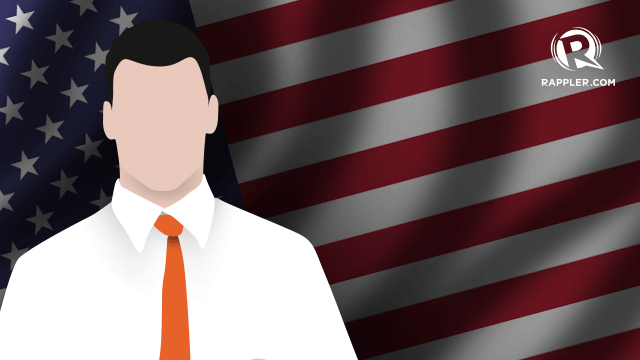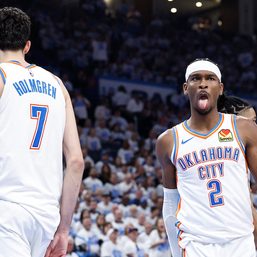SUMMARY
This is AI generated summarization, which may have errors. For context, always refer to the full article.
(The following is an excerpt from Winston Marbella’s memoir)
 A blast of cool air welcomed us back to the streets of San Francisco as we exited the massive revolving doors of the Bank of America building.
A blast of cool air welcomed us back to the streets of San Francisco as we exited the massive revolving doors of the Bank of America building.
We – my two dozen odd classmates from the International Marketing Institute in Cambridge, Massachusetts – had just listened to bank executives describe how BA used automated teller machines (ATMs) to drive its thrust into consumer retailing.
It was 1980, and we had driven down California’s Interstate 101 to visit a fledgling firm in Silicon Valley – home of America’s high technology industries, which everybody had hoped would set off a much-awaited economic renaissance. The Valley stretched across the horizon, bursting with energy. Corporate America looked at these sunrise industries as precursors of a bountiful future.
We made a quick dash back to our hotel to shed our corporate suits for our jeans. Tonight, we intended to savor the delights of San Francisco’s seafood restaurants and Napa Valley’s excellent wines, which had given the more expensive European wines a run for their money. Over the weekend, we had gone on a driving tour of Napa’s wineries and had come back suitably impressed and pleasantly inebriated.
Walking city
We fragmented into small groups and sauntered back into the famous City by the Bay. San Francisco is a walking city. We chose a fine restaurant with a Michelin star – for tonight we would leave our hearts behind.
We were at the halfway point of our hectic summer study tour visiting with the great companies of America – from the high-tech companies near our rustic campuses in Wellesley and Cambridge to the concrete jungles of Manhattan and across the river to New Jersey, home of Johnson & Johnson, and then on to Chicago, where we marvelled at the Sears Tower and relished recollections from early childhood of the Sears Roebuck catalogue.
We also marvelled at the scientific tools of research that AC Nielsen crafted to study the consumer mind.
Laughing water
We recalled the trip to 3M in Minnesota, where we had gawked at their prodigious culture of innovation (Post It Notes was a surprising success story) and gazed at the rolling white water of a river called Minnehaha, which we were told was named for an Indian maiden whose aboriginal name meant “laughing water.”
“Ha, ha, ha!” the now-cynically sophisticated class had retorted in chorus.
From there we had flown to Seattle in the Pacific Northwest. We recalled the visit to Oregon and the flight to San Francisco, where we glimpsed an orange sunset shimmering in the Bay.

Beguiled again
But tonight, we agreed, enough of the business of business. There was more urgent business at hand: selecting the aperitif, the entrée, and the wine. Tonight we would celebrate — not only because we were exhausted, but also because we were enchanted — for in the morning, we were to fly to the City of Angels and celebrate life with the “cast” of Disneyland.
We had read about Disney’s unique corporate culture and were eager to see it first-hand — but only after the enchanting joy rides, of course.
As we retreated from the last morsels of Chilean sea bass and looked forward to apple pie à la mode, the memories came flooding back in torrents, and the conversation drifted to that long, hot summer in America when we were awestruck students again.
Tall tales
Levi’s is a classic tale of a company that grew out of serving a real consumer need – or more accurately, one customer’s need. Its founder, Levi Strauss, actually went to California during the Gold Rush in the 1850s to be a grocer supplying the needs of miners and settlers.
Upon arriving in California, one miner told him he needed to find a pair of pants that could stand up to the rigors of gold prospecting. Overwhelmed by this Aha! Moment, Strauss tore up his brown tent canvass and had a tailor sew the first pair of jeans ever made.
The following story is woven from threads of a case study and from tall tales told by gold miners and urban cowboys:
The first jeans were made of brown canvass, but when he ran out of tents, Levi made them from a French cotton called “serge de Nîmes,” which the miners barbarized to “denims.”
Demand grew, and Strauss soon opened a store in San Francisco to serve the unique needs of gold miners with huge pockets. San Francisco had become a boom town with substantial purchasing power. Strauss later added brass rivets after miners complained their gold nuggets destroyed the pockets.
Indestructible
Over the years, Strauss altered the jeans to appeal to the taste of cowboys, teenagers, and other segments, but the 501 name stuck (that was the lot number). Strauss later added another classic trademark, a leather guarantee patch at the back showing a horse trying to rip apart a pair of jeans.
Levi’s popularity grew in the 1930s with the proliferation of wealthy ranchers, but the landmark years came in the 1950s when the jeans became the uniform de rigueur of youthful rebels with a cause who idolized Marlon Brando and James Dean.
The 501 button fly jeans are still its best selling product, a suitable fashion statement and everyday garb of literati and glitterati alike. The list is endless: Robert Redford, Paul Newman, Princesses Diana and Caroline, Norman Mailer, Truman Capote, David Halberstam, Gay Talese, John F. Kennedy, Bobby, Bill Clinton, Ronald Reagan, Tony Blair, George Bush, Federico Fellini, Sophia Loren, Gwyneth Paltrow….
Levi’s reached its highest cool rating with the dawning of the Silicon Valley revolution, when jeans of all shapes and labels became apparel de rigueur of the digirati. At the head of the pack was Apple’s Steven Jobs, whose daily corporate garb was a black turtleneck, sneakers (socks optional), and jeans.
Blue
During the mild economic depression in the early 80s, sales of basic blue jeans fell across America. Levi’s launched an innovative advertising campaign — the biggest in the clothing industry at the time — featuring “real people” going through an ordinary day to the strains of blues music.
One ad stood out for its portrayal of a handicapped man — a graphic demonstration of Levi’s corporate soul even in those early days. The concept of corporate social responsibility was not yet in vogue; nay, the phrase had not even been minted!
Today, more than 150 years later, Levi’s continues to respond to the needs of real people from all walks of life.
By seeking to serve one customer’s need in the gold mines of California, Levi’s found its own gold mine of urban cowboys worldwide. Levi’s was a true marketer: it served real people needs and showed social responsibility, an unbeatable combination in today’s marketing wars.
Levi’s found the soul of cool. – Rappler.com
The author is founder and CEO of a management consultancy with a strong historical inclination; e-mail him at mibc2006@gmail.com.
Add a comment
How does this make you feel?





There are no comments yet. Add your comment to start the conversation.